Army Group North
Army Group North (German: Heeresgruppe Nord) was a German strategic echelon formation, commanding a grouping of field armies during World War II. The German Army Group was subordinated to the Oberkommando des Heeres (OKH), the German army high command, and coordinated the operations of attached separate army corps, reserve formations, rear services and logistics, including the Army Group North Rear Area.
| Army Group North | |
|---|---|
| Heeresgruppe Nord | |
| Active |
|
| Country | |
| Commanders | |
| Notable commanders | |
Operational history
The Army Group North was created on the 2 September 1939 by reorganization of the 2nd Army Headquarters. Commander in Chief as of 27 August 1939 was Field Marshal Fedor von Bock.
Invasion of Poland
The first employment of Army Group North was in the invasion of Poland of 1939, where in September it controlled:
- 3rd Army
- 4th Army
- a reserve of four divisions
- 10th Panzer Division
- 73rd Infantry Division
- 206th Infantry Division
- 208th Infantry Division.
The Army Group was commanded by Fedor von Bock for the operation.
After the end of the campaign, it was transferred to the Western Theatre and on the 10 October 1939 was renamed as the Army Group B, and consisted of:
- 6th Army
- 4th Army
Invasion of the Soviet Union
In preparation for Operation Barbarossa, Army Group North was reformed from Army Group C on 22 June 1941. Army Group North was commanded by Field Marshal Wilhelm Ritter von Leeb[1] and staged in East Prussia. Its strategic goal was Leningrad, with operational objectives being the territories of the Baltic republics and securing the northern flank of Army Group Centre in Northern Russia between Western Dvina River and Daugavpils-Kholm Army Group boundary. On commencement of the Wehrmacht's Baltic offensive operation the army group deployed into Lithuania and northern Belorussia. It served mainly in Baltic territories and north Russia until 1944. Commander in Chief 22 June 1941: Wilhelm Ritter von Leeb.
Its subordinate armies were deployed with the following immediate objectives:
The Baltic offensive operation
All operational objectives such as Tallinn were achieved despite stubborn Red Army resistance and several unsuccessful counter-offensives such as the Battle of Raseiniai, and the army group approached Leningrad, commencing the Siege of Leningrad. However, while the Baltic states were overrun, the Siege of Leningrad continued until 1944, when it was lifted as a result of the Red Army Leningrad-Novgorod strategic offensive operation.
In September 1941, the Spanish Blue Division was assigned to Army Group North.
Northern Russia offensive operation
Composition:
October 1941
- 16th Army
- 18th Army
Northern Russia defensive campaign
Commander in Chief 17 January 1942: GFM Georg von Küchler
Composition:
September 1942
- 11th Army
- 16th Army
- 18th Army
December 1942
- 16th Army
- 18th Army
Demyansk Pocket
Kholm Pocket
Soviet Toropets-Kholm Operation
Battle of Velikiye Luki
Battle of Krasny Bor
Baltic defensive campaign
Commander in Chief 9 January 1944: Field marshal Walter Model
Commander in Chief 31 March 1944: Generaloberst Georg Lindemann
Commander in Chief 4 July 1944: Generaloberst Johannes Frießner
Commander in Chief 23 July 1944: GFM Ferdinand Schörner
March 1944
- Army detachment "Narwa"
- 16th Army
- 18th Army
Battle of Narva, consisting of:
Combat in South Estonia, 1944
Soviet Baltic Offensive
Battle of Porkuni
Battle of Vilnius (1944)
Battle of Memel
After becoming trapped in the Courland Cauldron after 25 January 1945, the Army Group was renamed Army Group Courland. On the same day, in East Prussia, a new Army Group North was created by renaming Army Group Center. On the 2 April 1945, the army group was dissolved, and the staff formed the 12th Army headquarters.
Campaign in East Prussia
Army Group North (old Army Group Centre), was driven into an ever smaller pocket around Königsberg in East Prussia. On April 9, 1945 Königsberg finally fell to the Red Army, although remnants of Army Group units continued to resist on the Heiligenbeil & Danzig beachheads until the end of the war in Europe.
October 1944
- 16th Army
- Armee-Abteilung Grasser
- 18th Army
November 1944
- 16th Army
- Armee-Abteilung Kleffel
- 18 Armee
December 1944
- 16th Army
- 18th Army
Soviet East Prussian Offensive
Battle of Königsberg
Heiligenbeil pocket
Campaign in West Prussia
Commander in Chief 27 January 1945: Generaloberst Dr. Lothar Rendulic
Commander in Chief 12 March 1945: Walter Weiss
Composition:
February 1945
- Armee-Abteilung Samland
- 4th Army
Soviet East Pomeranian Offensive
Battle of Kolberg
Courland Pocket
On the 25 January 1945 Hitler renamed three army groups. Army Group North became Army Group Courland, more appropriate as it had been isolated from Army Group Centre and was trapped in Courland, Latvia; Army Group Centre became Army Group North and Army Group A became Army Group Centre.
Commanders
| No. | Commander | Took office | Left office | Time in office | |
|---|---|---|---|---|---|
| 1 | Generalfeldmarschall Fedor von Bock (1880–1945) | 27 August 1939 | 20 June 1941 | 1 year, 297 days | |
| 2 | Generalfeldmarschall Wilhelm Ritter von Leeb (1876–1956) | 20 June 1941 | 17 January 1942 | 211 days | |
| 3 | Generalfeldmarschall Georg von Küchler (1881–1968) | 17 January 1942 | 9 January 1944 | 1 year, 357 days | |
| 4 | Generalfeldmarschall Walter Model (1891–1945) | 9 January 1944 | 31 March 1944 | 82 days | |
| 5 | Generaloberst Georg Lindemann (1884–1963) | 31 March 1944 | 4 July 1944 | 95 days | |
| 6 | Generaloberst Johannes Frießner (1892–1971) | 4 July 1944 | 23 July 1944 | 19 days | |
| 7 | Generalfeldmarschall Ferdinand Schörner (1892–1973) | 23 July 1944 | 27 January 1945 | 188 days | |
| 8 | Generaloberst Lothar Rendulic (1887–1971) | 27 January 1945 | 12 March 1945 | 44 days | |
| 9 | Generaloberst Walter Weiß (1890–1967) | 12 March 1945 | 2 April 1945 | 21 days |
See also
- Army Group South
- Army Group Centre
- German order of battle for Operation Fall Weiss
- Police Regiment North
Notes and references
- Kirchubel, Robert (2012). Operation Barbarossa 1941 (2): Army Group North. Osprey. p. 18.
Bibliography
- Frieser, Karl-Heinz; Schmider, Klaus; Schönherr, Klaus; Schreiber, Gerhard; Ungváry, Kristián; Wegner, Bernd (2007). Die Ostfront 1943/44 – Der Krieg im Osten und an den Nebenfronten [The Eastern Front 1943–1944: The War in the East and on the Neighbouring Fronts]. Das Deutsche Reich und der Zweite Weltkrieg [Germany and the Second World War] (in German). VIII. München: Deutsche Verlags-Anstalt. ISBN 978-3-421-06235-2.CS1 maint: ref=harv (link)
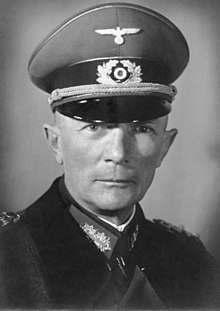
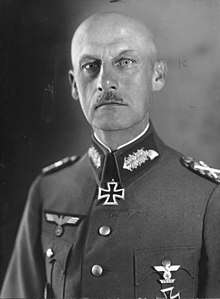
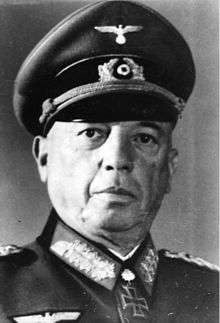
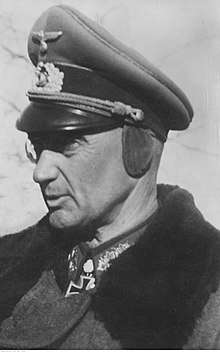

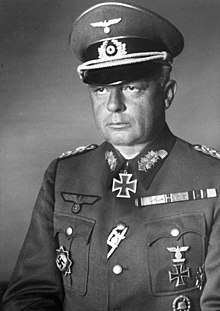
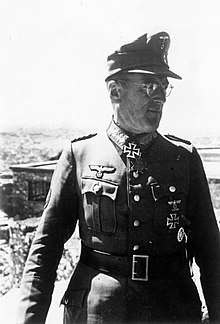
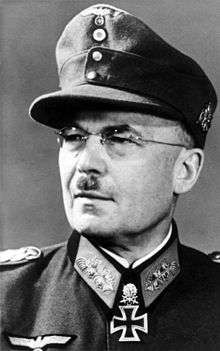
.jpg)